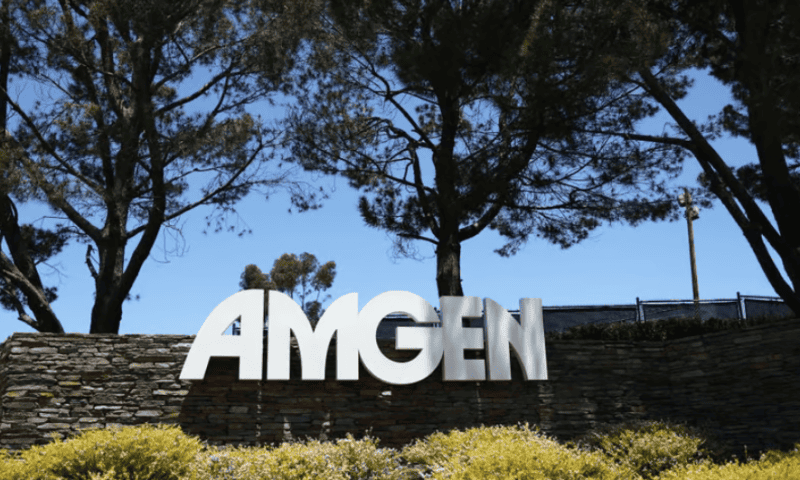Amgen is popping open the hood to phase 2 data of its second-in-line BiTE molecule, tarlatamab, claiming the latest readout is a “watershed moment” months after teasing a durable response rate among patients with hard-to-treat lung cancer.
The new data presented Friday at the European Society of Medical Oncology Congress and released in The New England Journal of Medicine dives deeper into promising figures discussed during the company’s third-quarter earnings report in August. A 10-mg dose of tarlatamab spurred a 40% objective response rate (ORR) in patients with small cell lung cancer who had received a median of two lines of prior treatment. Patients who received a larger, 100-mg dose saw a lower ORR of 32%.
The lower dose also proved superior when it came to median progression-free survival, which hit 4.9 months and 3.9 months in the 10-mg and 100-mg dose groups, respectively. For comparison, a review of data from 2018 found that small cell lung cancer patients receiving third-line chemotherapy had an ORR of 18% with a median progression-free survival of two months.
Amgen’s R&D chief David Reese, M.D., said in a release that the Big Pharma looks forward to talking about the “potentially registrational data with regulatory authorities.” Chief Medical Officer Paul Burton, M.D., called the findings a “watershed moment” for Amgen’s oncology team.
“This represents about a tripling in the duration of survival,” Burton said in an interview with Fierce Biotech.
A point of concern, however, is in the safety profile, with one patient in the 10-mg group dying of respiratory failure, which the investigator found to be related to tarlatamab. A spokesperson did not immediately respond to a request for comment on the event.
Slightly more than half of patients in the 10-mg treatment group experienced cytokine release syndrome compared to 61% of those given the 100-mg dose. All told, 3% of patients discontinued tarlatamab due to treatment-emergent adverse events.
Despite its apparent superiority, Burton wouldn’t commit to the 10-mg dose as the path forward in a future trial, telling Fierce that the company wants to solicit input from stakeholders and regulators first.
However, a spokesperson for the company confirmed to Fierce that the “benefit-risk profile supports 10 mg as the optimal dose.”
Tarlatamab is also in a phase 1 trial as a treatment for neuroendocrine prostate cancer, joining two other BiTE molecules looking at tackling prostate cancer. Xaluritamig and AMG 340 are both in development as potential prostate cancer treatments.
Burton said if the company identifies more cancers that express anti-delta-like ligand 3, one of tarlatamab’s targets, then the company could initiate a basket trial to uncover more tumors of interest.
“If there were six, seven different cancers that express DLL3, which is what tarlatamab goes after, we could then try and bring them into a single study and study them as a whole,” the CMO explained. “But right now, we’re going after cancer by cancer.”
Editor’s note: This story was updated with details on a patient death in the 10-mg treatment arm.

